BT510 Bluetooth 5 Long Range IP67 Multi-Sensor
Overview
The Sentrius™ BT510 Sensor is a battery powered, Bluetooth v5 Long Range integrated open development device enabling application development for robust, reliable sensor data transfer in the harshest of environments.
The Sentrius™ BT510 packs in more than just a IP67 temperature sensor, also seamlessly integrating open / close contact and motion / impact detection and Bluetooth LE beaconing capabilities.
The BT510 is powered by Ezurio's (formerly Laird Connectivity) field proven BL654 Bluetooth LE module that integrates Nordic Semiconductor’s nRF52840 silicon for feature rich application development in the Cortex M4F with 1 MB Flash memory, which also enables integrated sensor data logging and storage. The ultra-low power sensor uses a single replaceable CR2477 coin cell battery, for a multi-year life and hassle-free, long-term maintenance.
The BT510 is a multi-sensor platform, with a magnetic reed switch sensor, temperature sensor, proximity sensor, and accelerometer. These multiple sensing capabilities support a massive array of use cases and applications, and its IP67 enclosure ensures robust protection for even the harshest of environments
Multi Sensor Platform – Integrated temperature, accelerometer and magnetic reed switch sensors
Best-in-Class BTv5 Performance – Bluetooth LE long range, secure connections and Bluetooth LE beaconing
Application Environment
- Utilize the Open source Zephyr RTOS to build your application using the Ezurio BT510 Zephyr board file and sample applications.
- Alternatively use legacy FreeRTOS binary application with supporting mobile apps (Note : No future firmware updates planned)
IP67 Enclosure – A rugged IP67 certified enclosure with simple twist / lock design for hassle free maintenance
Replaceable Battery – Ultra low power capabilities and replaceable CR2477 coin cell
Worldwide Approvals – Device certified for FCC, ISED, CE, UKCA, MIC, RCM, and Bluetooth SIG
Customization – Custom branding, packaging, application development all available!
Temperature Sensor
Open / Close Sensor
Proximity Sensor
Acceleration Sensor
Best-in-Class Performance
Powered by our proven BL654 module with BLE Long Range and BLE beaconing
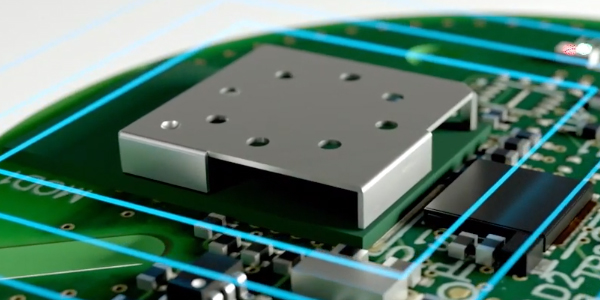
nRF52840
Feature rich application development using Nordic Semiconductor’s nRF52840
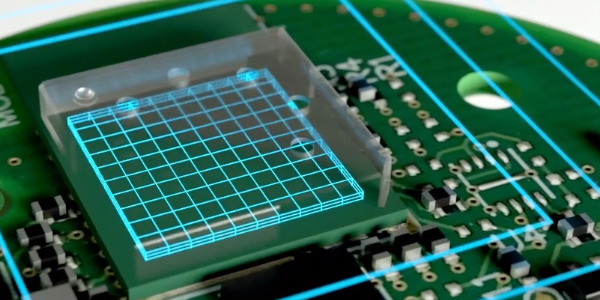
Replaceable Battery
Replaceable CR2477 coin cell battery for a multi-year, hassle-free life
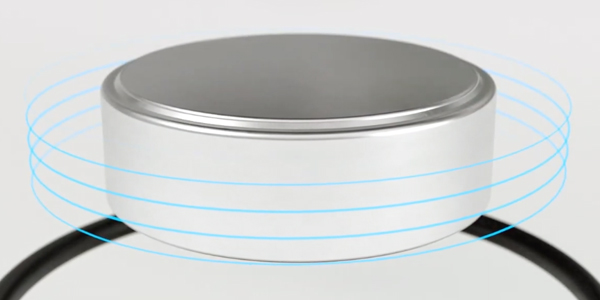
Twist / Lock Design
Implements a simple twist / lock design for hassle-free maintenance
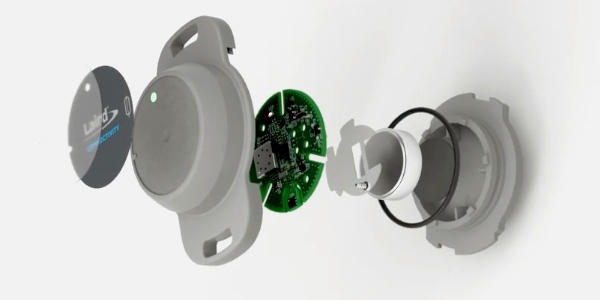
IP67 Certified
Rugged IP67 certified enclosure designed for the harshest environments
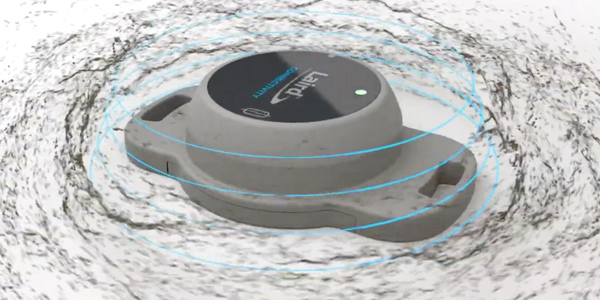
Small Footprint
A small, low-cost footprint to gather data across a wide-variety of applications

How far can power-saving take your application?
The Sentrius BT510 is a Bluetooth 5 Low Energy multi-sensor can last for months or years on its replaceable coin-cell battery. That battery life is dependent on lots of factors such as sleep time, ambient temperature, and more. Estimate how long your BT510 application can go on a single battery using our battery estimator tool.
Specifications
| Part Number | Additional Description | Antenna Type | Chipset (Wireless) | Frequency Range (Max) | Frequency Range (Min) | Logical Interfaces | OS/Software | Packaging | Product Type | System Architecture | Technology |
|---|---|---|---|---|---|---|---|---|---|---|---|
| 455-00083 Recommended for New Design (RND) Buy Now | Sentrius™ BT510 Sensor | Internal | Nordic nRF52840 | 2483 MHz | 2400 MHz | Configurable Push Button | Board reference to develop your applications with Zephyr RTOS | Single | IoT Sensor | Hostless | Bluetooth 5.0 |
| 450-00048B Recommended for New Design (RND) Buy Now | Sentrius™ BT510 Sensor | Internal | Nordic nRF52840 | 2483 MHz | 2400 MHz | Configurable Push Button | Board reference to develop your applications with Zephyr RTOS | Bulk | IoT Sensor | Hostless | Bluetooth 5.0 |
| 455-00058B Recommended for New Design (RND) Buy Now | Magnet Kit (Open / Close) for Sentrius™ BT510 | Internal | Nordic nRF52840 | 2483 MHz | 2400 MHz | Configurable Push Button | Board reference to develop your applications with Zephyr RTOS | Bulk | IoT Sensor | Hostless | Bluetooth 5.0 |
Development Kits
-
/filters:background_color(white)/2021-04/453-00062-K1_BoxContents-1200.png)
453-00062-K1
Additional DescriptionUSB-SWD Programming Kit: Includes mainboard, TC2050-IDC Tag Connect cable, 10-pin flat IDC cable, 1.2 m USB cable, and 2-pin jumper
Documentation
What happens when battery or temp sense is set to a zero value?
When the Temperature Sense Interval is set to 0, temperature measurements are stopped, although there will be 1 one more measurement when the value is changed.
When the Battery Sense Interval is set to 0, battery measurements are stopped. Note there is a power fail circuit built into the device that constantly monitors the battery level. Even if the Battery Sense Interval is set to 0, and the battery level drops below the failure level, a battery fail event will still be advertised.
How to Factory Reset BT510 loaded with legacy firmware?
There are two methods of doing BT510 Factory
Reset.
Method 1: If the button is pressed for a duration exceeding 10 seconds and then
released, the sensor will initiate a factory reset. This factory reset
operation wipes out all stored logs, clears pairing information, and restores
the configuration to its original settings. It takes approximately two seconds
for the BT510 to reboot and become operational again after the reset, during
which time it won't be able to detect button presses.
Method 2: You can do Factory Reset via nRF Connect for Mobile.
This process is briefly explained in the User Guide in
the Section 4.4, Example 6. Instead of the keyword “Reboot” you
can use “Factory Reset.”
This is the JSON command that you can use: {"jsonrpc":
"2.0", "method": "factoryReset", "id":
4}
What is the Project Zephyr Discord?
There's a Zephyr RTOS Discord channel. This is a great place to ask questions and have them answered by the engineers who wrote the software. There's even a channel for HL7800!
How much flash memory does the BT510 have?
BT510 has 1MB internal flash memory.
Using STTY with the USB-SWD
These instructions are intended for Linux or Macintosh OS. They may work using WSL, Cigwin, or other bash style terminals in Windows although this is untested.
It may be desired to communicate with a device attached to the USB-SWD without terminal emulation, I.E. Picocom, Screen, Putty. This can be useful for writing bash scripts, or if you're using Zephyr's "west flash" and would like a quick way to check your output.
- Verify you have the program "stty" available using the command "which stty", if this does not return a value you will need to install it. Fortunately "stty" generally comes standard with Linux and MacOS.
- Identify your serial device. This can be done using the command "dmesg -w" then connecting the USB-SWD. You will see output like this (In Linux).
- (Optional) Assign the device name to a variable, for example "DEVICE=/dev/ttyACM0".
- Configure "stty" to talk with the device "stty -F $DEVICE 115200 -echo -echoe -echok"
- To see output from the device execute "cat $DEVICE &". This will send serial communication from the device to Linux's standard output. The "&" is to run this program in the background.
- Now press the reset button on the USB-SWD, you should see the output from your device. In this example the Zephyr "Hello World" example has been flashed to a BT510.
- (Optional) if you would like to send commands back to the device you can use "echo" or add an argument to your shell, "foo() { echo -n -e "$1\r" > $DEVICE; }". Now commands can be issued directly from the command line, for example "foo "my_command"" will send the string "my_command" to the device.


Can my BT510 measure vibration frequency with its embedded accelerometer?
As part of the default BT510 firmware developed by Ezurio, the accelerometer data is pretty binary:
- Movement detected.
- No movement detected.
The BT510 motion detection is done by comparing accelerometer data against an arbitrary threshold adjusted by a slider into the Sentrius BT510 phone application.
Any overshoot of acceleration detected will trigger the event "Movement" which then will be advertised afterwards.
The default BT510 accelerometer use-case is mainly targeted to motion detection of an asset during a logistics supply chain. Customers can set the above threshold from 1 to 99 to adapt motion detection sensibility according to their needs.
If customers decide to develop their own firmware, they can have access to further data like acceleration value and orientation.
However, the ST LIS2DH sensor embedded into the BT510 doesn't include vibration frequency application:
Hence it makes the BT510 not really suited for vibration frequency measurement applications.
Can I get BT510 temperature sensor certification?
The BT510 uses a SiLabs SI7055 I²C temperature sensor : https://www.silabs.com/sensors/temperature/si705x/device.si7055
You'll find its calibration certificate here : https://www.silabs.com/documents/public/miscellaneous/si70xx-calibration-certificate.pdf
How can I interface with a BT510 without the Mobile App?
|
The BT510 is an event driven BLE multi-sensors which is capable of measuring temperature, open/close magnet and motion detection. There is basically two ways to get data from it:
While the BT510 as been especially designed to transfer data via BLE advertisements, you can also use BLE connection to retrieve data. It's worth mentioning that preliminary intended use of BLE connection with the BT510 is for configuration (usually during commissioning process on the field). As exposed into the Sentrius™ BT510 User Guide section 4.2, the BT510 make use of BLE Virtual Serial Port (VSP) service. The BL654 is BLE v5.1 module which embeds an nRF52840 chipset from Nordic. Ezurio developed smartBASIC, an event driven programming language that sits on top of Nordic SDK. Its most famous software/feature is the AT Commands Interface where you can drive a BLE module through UART with using batch of intuitive commands. As part of IoT applications that involve to interact with a BT510 via BLE through a BL654 loaded with AT Command Interface, it can be useful to know the steps to get the BL654 connected to the BT510. Because the BT510 GATT table is protected by a pairing process which involve static passkey (123456), it's important to change BL654 IOCAP in first instance to allow a Passkey entry procedure during pairing/bonding process. On the BL654 side you'll need to follow the procedure below with AT Commands :
Now that both devices are connected with VSP mode, you can write JSON commands to send over BL654 UART in order to configure the BT510 as you like. For more information on JSON spec, you can have a look here : https://www.jsonrpc.org/specification A typical AT Commands session could look like this, where 01C630157769EE is a BT510 BLE Mac Address: ATS 107=4 OK AT&W OK ATZ OK AT+LCON 01C630157769EE connect 1,01C630157769EE,15000,6000000,0 AT+PAIR 1 OK passkey? 1 AT+PRSP 1,123456 encrypt 1 AT+LDSC 1 discon 1,22 // BL654 is now bonded to BT510, VSP connection can be made. ATD 01C630157769EE ENCRYPT CONNECT 0,01C630157769EE,15000,6000000,0 |
Where can I find Python example codes to leverage with my IG60-BL654 which shows how to interact with BT510?
We do have a dedicated Github page page that exposes Python examples code which undertake common operations between a BT510 and a BL654 loaded with smartBASIC AT Commands Interface.
It especially includes :
- Sensor configuration
- Analysing advertisements
- Reading and decoding BT510 event logs
- ... and many more!
These codes can be easily leveraged for any real world applications that would include BT510 mated with the IG60-BL654 or any other custom gateways.
You can find more information on the following page : https://github.com/LairdCP/BT510-Python
Can I use a different magnet to trigger the BT510 sensor magnet switch?
Technically any magnet with sufficient field strength and proper field orientation can be used.
The magnet sensor used in the BT510 is a magnetoresistive sensor and hence the sensitive axis is in the sensor plane (other than for hall sensors where the sensitive axis is perpendicular to the sensor plane). Below picture indicates the sensitive axis. The sensor is NOT sensitive to the direction of the field!
More information about sensitivity and orientation recommendations from the sensor chip perspective is in the SM351LT data sheet. The below picture summarizes the most important aspects. It also shows the orientation of the sensor chip relative to the BT510 enclosure. The magnet coming with the BT510 is a rod-style magnet with axial magnetization and hence the field lines go from the short sides (top/bottom) of the magnet (more or less parallel) along the long sides of the magnet like indicated in the “magnet movement” section of the picture. This orientation ensures the field lines penetrating the sensor chip mainly along its sensitive axis. One can also see that rotating the magnet by 90° would lead to the field lines penetrating the sensor chip perpendicular to the sensitive axis and hence not generate any signal.
When selecting a different magnet than the standard BT510 magnet both field strength and orientation needs to be taken into account. A magnet with higher field strength can cover a larger operating distance to trigger the magnet switch.
There exist a lot of standard round magnets on the market often used to stick/fix something onto metal surfaces and hence the magnetization is not critical and works for any magnetization type (like axial, vertical, diametrical…). However, often the magnetization type is not even specified for a particular magnet and cheap ones (like used for white boards) sometimes even have several magnetic poles in parallel over the area of the magnet. This actually helps for the common use-case of sticking well to metal surfaces but makes them quite unusable for reliably and reproducibly triggering a sensor chip.
How to best orientate your round magnet to get stable sensor near/far readings would depend on how the magnet is being magnetized and how the magnetic field lines would penetrate the sensor chip when applied. If the magnetization is unknown a magnetic field viewer (aka flux detector/viewer) can be used to "see" the magnetic poles and get the orientation of field lines.
The general advice would be to either use a rod-style magnet with axial magnetization in the above shown orientation or a round magnet with known magnetization type and then positioned in a way so that the field lines penetrate the sensor in its most sensitive axis. To ensure this, the magnetization of the magnet must be known before mounting.
What does Task 10 failed error mean when I'm using BT510 Legacy Firmware ?
Task 10 failed occurs when a firmware update fails. If you see this error please make sure you are using the latest version of the BT510 app and retry the firmware upgrade.
Is the BT510 sensor battery replaceable?
Yes, the BT510 Sentrius™ BT510 sensor is replaceable by removing the rear battery door cover.
The battery is a 3-volt lithium of CR2477 type.
The battery door cover has a gasket inside to keep out liquids.
How long will the sensor battery last if I use BT510 Legacy Firmware?
The Sentrius™ BT510 is a Bluetooth 5 Low Energy multi-sensor can last for months or years on its replaceable coin-cell battery. That battery life is dependent on lots of factors such as advertisement and event frequencies, PHY, sleep time, ambient temperature, and more.
To estimate how long your BT510 application can go on a single battery, adjust the values at the BT510 battery life estimator
It's good mentioning this battery life estimator stand for the BT510 Legacy Firmware only and is not relevant if customers develop their own custom firmware.
How can I extend the range of the BT510 Sensor?
The Sentrius™ BT510 sensors range is dependent on a number of factors some of which are under user control.
You can configure a sensor using a Bluetooth connection and the Laird virtual serial port(vSP) service. The protocol sent over the virtual serial port is JSON-RPC version 2.This allows you to add new commands and features without changing the Bluetooth interface.
This includes being able to configure
- Tx power
- LE Coded (Long Range) PHY
More details are available via the BT510 user guide.
It is also possible to extend the range of the BT510 using the Laird BL654 Repeater/gateway smartbasic programs this allows the Laird BL654 module to function as a repeater or gateway for adverts from Laird’s BT510 sensors. It can also operate in AT mode where it can advertise, scan, connect, and offer GATT client and server capabilities. This application is controlled with the industry standard AT command protocol over a UART interface.
- BT510 Repeater Mode–The module listens for adverts from Laird’s BT510 sensors or other BT510 repeaters and rebroadcasts over the air so that a range extension can be facilitated. All other adverts are ignored.
- BT10 Gateway Mode–The module listens for adverts from Laird’s BT510 orBT510 Repeaters and sends them out in hex format over the UART interface so that a host can process them. It could forward to the cloud if it has the appropriate connectivity. All other adverts are ignored.
- Generic BLE Client/Server Mode–The module can be made to advertise, scan, connect, and pair. In addition, it can enable the creation of a GATT server table on-the-fly and, conversely can be a GATT client to interact with remote GATT servers.
More details are available via the BT510 Repeater/Gateway user guide.
The source code for all of these applications is hosted on our GitHub page:
Can I access the accelerometer data in the BT510 sensor?
The Sentrius™ BT510 advertises events. An event can be a temperature measurement, an alarm ,a battery measurement, a button press, a door opening/closing, or movement. The configuration of a sensor determines what kind of events it generates.
Access to accelerometer values is not possible but it is possible to configure the accelerometer sensitivity. You can configure a sensor using a Bluetooth connection and the Laird virtual serial port (VSP) service. The protocol sent over the virtual serial port is JSON-RPC version 2. This allows you to add new commands and features without changing the Bluetooth interface. The BT510 accelerometer creates a movement event.
More details can be found in the BT510 user guide.
Can the BT510 sensor use BLE LE Coded Phy (Long range)?
Yes!
You can configure a sensor using a Bluetooth connection and the Laird virtual serial port(vSP) service. The protocol sent over the virtual serial port is JSON-RPC version 2. This allows you to add new commands and features without changing the Bluetooth interface.
This includes being able to change the PHY to LE coded for long range applications.
The Laird BT510 smartphone applications allows a user to select LE Coded PHY.
LE Coded PHY can also be selected from your own smartphone application using JSON over VSP BLE connections.
Details can be found in the BT510 user guide
Can I program the BT510 myself?
Out of the box the BT510 is configured via a smartphone app but this does not allow a developer to reprogram the BT510. However the BT510 can be programmed by a developer using Zephyr in C. More details can be found at the following link.
The Zephyr OS is based on a small-footprint kernel designed for use on resource-constrained and embedded systems: from simple embedded environmental sensors and LED wearables to sophisticated embedded controllers, smart watches, and IoT wireless applications.
Is there a programming cable available for the BT510 Sensor?
The BT510 sensor is configured using a smartphone via BLE out of the box. It is also possible for a developer to load their own C code onto the BT510 via a programming cable.
The BT510 board does not have an on-board J-Link debug IC as some nRF5x development boards, however, instructions from the Nordic nRF5x Segger J-Link; page also apply to this board, with the additional step of connecting an external debugger.
Ezurio will provide the USB-SWD programming board that supports this connector layout, refer to the USB SWD Programmer product page
What is the JSON string to change the TX power in the BT510 outside of the BT510 app?
The following string should be sent over VSP, where 8 is 8dBm
{"jsonrpc": "2.0", "method": "set", "params": {"txPower": 8}, "id": 1}
Valid values include:
-40 dBm, -20 dBm, -16 dBm, -12 dBm, -8 dBm, -4 dBm, 0 dBm, +2 dBm, +3 dBm, +4 dBm, +5 dBm, +6 dBm, +7 dBm, +8 dBm
See the user guide for further details.
Why am I not seeing temperature adverts from the BT510 sensor?
After factory defaulting the BT510 it enters shelf mode. Before configuring the BT510 sensor from the app you should press the button on the front of the sensor for 3 seconds to move it from shelf to active mode before configuration from the BT510 app.
Resource Center
-
/filters:background_color(white)/2019-10/Ep3-Thumbnail.png)
Connectivity Corner 3: Introducing the Sentrius™ BT510 Sensor
Ezurio is introducing the latest in its line of IoT Sensors , the Sentrius™ BT510 Bluetooth 5 Multi-Sensor . In this episode, product director Jonathan Kaye explains the features of the sensor,...
-
/filters:background_color(white)/2020-02/bt510-bluetooth-sensor.png)
Create a Sensor Ecosystem Today with the Sentrius BT510 Bluetooth 5 Long-Range Sensor Platform
The Sentrius™ BT510 Bluetooth 5 sensor platform is now in stock and ready for your Internet of Things (IoT) application. The BT510 is a rugged, long-range sensor platform that provides Bluetooth...
-
/filters:background_color(white)/2019-12/BT510-Temperature-Sensor-Winner.png)
Sentrius BT510 Bluetooth 5 Sensor Platform Wins Embedded Computing Design Best in Show
Akron, Ohio – December 10, 2019 – Laird Connectivity, a global leader in wireless technology, earned Embedded Computing Design’s Best in Show in the Wired and Wireless Connectivity,...
Become an Ezurio Customer to Gain Exclusive Access to Our Design Experts
- Antenna Scans
- Antenna selection and placement
- Custom antenna design
- Worldwide EMC testing / certifications
- Embedded RF hardware / firmware design
- Cloud architecture and integration
- Mobile application development
- Product & Industrial Design
Buy Now
| Distributor | Part | In Stock | Region | Buy |
|---|---|---|---|---|
| DigiKey | 450-00048B | 0 | North America | Buy Now |
| Mouser | 450-00048B | 0 | North America | Buy Now |
| Mouser | 453-00062-K1 | 13 | North America | Buy Now |
| DigiKey | 453-00062-K1 | 10 | North America | Buy Now |
| Mouser | 455-00058B | 123 | North America | Buy Now |
| DigiKey | 455-00083 | 329 | North America | Buy Now |
| Future Electronics | 455-00083 | 69 | North America | Buy Now |
| Mouser | 455-00083 | 0 | North America | Buy Now |
Distributors
| Distributor | Phone Number | Region | Website |
|---|---|---|---|
| Arrow Electronics | 1-855-326-4757 +44 2039 365486 |
APAC, North America, South America, EMEA | Website |
| Avnet | 1-480-643-2000 +44 1628 512900 |
APAC, North America, South America, EMEA | Website |
| Braemac Australia, New Zealand, South East Asia | +61 2 9550 6600 +64 9 477 2148 |
APAC | Website |
| Cal-Chip Connect | 1-215-942-8900 |
North America | Website |
| DigiKey | 1-800-344-4539 |
North America, South America, APAC, EMEA | Website |
| EBV Elektronik | EMEA | Website | |
| Farlink Technology China, Hong Kong | +86 13266922199 |
APAC | Website |
| Farnell | 1-800-936-198 +44 3447 11 11 22 |
EMEA | Website |
| Future Electronics | 1-800-675-1619 1-514-428-8470 |
North America, South America, APAC, EMEA | Website |
| Glyn | +49-6126-590-0 |
EMEA | Website |
| Hy-Line Germany Only | +49 89 614 503 0 |
EMEA | Website |
| Jetronic China, Hong Kong and Taiwan | 852-27636806 |
APAC | Website |
| Laird Connectivity | 1-847-839-6925 +44 1628 858941 |
North America, South America, APAC, EMEA | Website |
| M2M Germany | +49-6081-587386-0 |
EMEA | Website |
| Martinsson | +46 8 7440300 |
EMEA | Website |
| McCoy South East Asia | +65 6515 2988 |
APAC | Website |
| Mouser | 1-800-346-6873 +44 1494 427500 |
North America, South America, APAC, EMEA | Website |
| RS Components | +852-2421-9898 +44 3457-201201 |
North America, South America, APAC, EMEA | Website |
| Ryoyo Japan | +81-3-3543-7711 |
APAC | Website |
| Solsta UK Only | +44 (0) 1527 830800 |
EMEA | Website |
| Supreme Components International India, South East Asia | +65 6848-1178 |
APAC | Website |
| Symmetry Electronics | 1-866-506-8829 |
North America | Website |
| Tekdis Australia and New Zealand | +61 3 8669 1210 |
APAC | Website |
| Telsys | +972 3 7657666 |
EMEA | Website |
| WPG | +44 1628 958460 |
EMEA | Website |
 Laird Connectivity is now Ezurio
Laird Connectivity is now Ezurio/filters:background_color(white)/2020-02/bt510-bluetooth-sensor-award.jpg)
/filters:background_color(white)/2019-11/BT510-Temperature-Sensor-Front.png)
/filters:background_color(white)/2020-02/BT510-Back-with-BLE-ID.jpg)
/filters:background_color(white)/2019-10/BT510---Low-Angle.jpg)